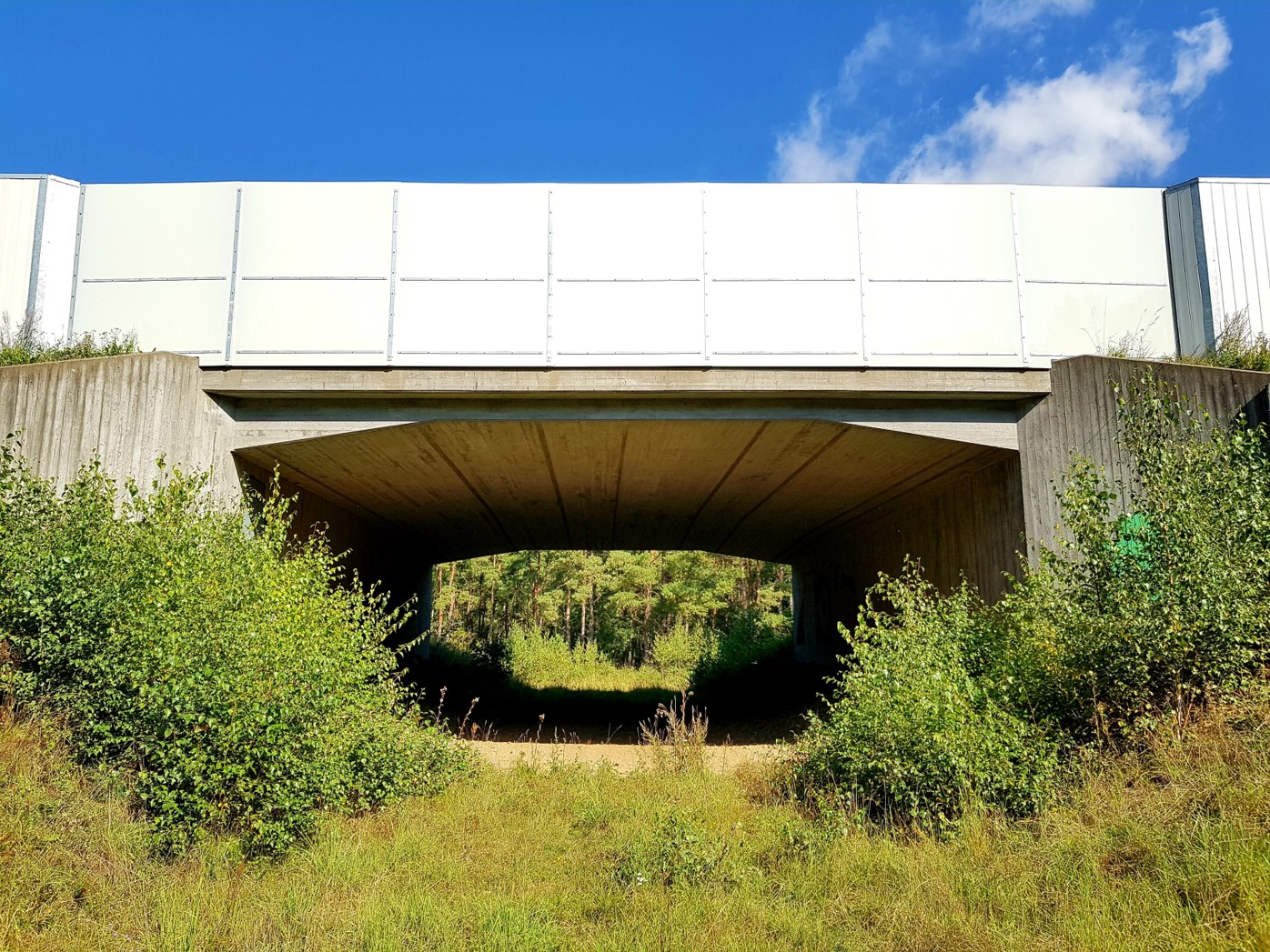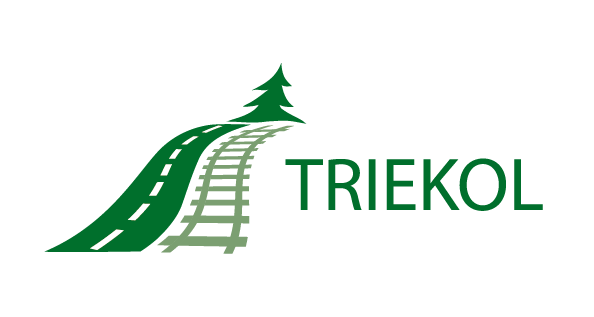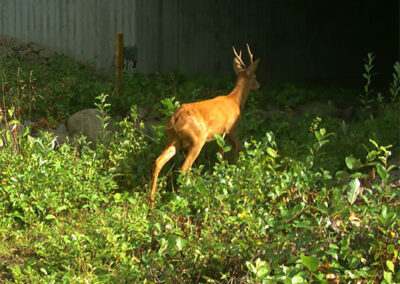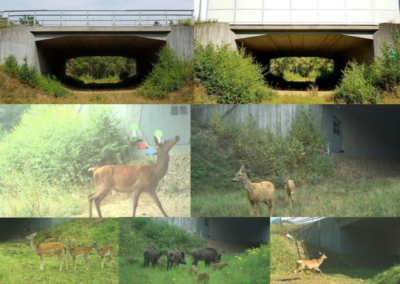Page not available in Swedish.
Background
Conventional (non-wildlife) bridges are used by wildlife to various extent. These bridges could with relatively small efforts be adapted to further facilitate wildlife use. Examples of improvements are:
screening of traffic noise and visual impacts
vegetation or other natural structures that cover and guide animals to the passage,
feeding stations that attract animals to the passage
adapted fencing to funnel animals to the passage
daytime illumination in underpasses
limiting human disturbance (traffic, pedestrians etc.) in/near the passage

Screen. Photo: Marcus Elfström.
Adaptation of non-wildlife bridges could potentially be a very cost-efficient way to minimize barrier effects compared to construction of new passages particularly for wildlife. However, the effect of these different improvement opportunities are not known, so currently it can only be considered a promising potential, that cannot yet substitute true wildlife passages. Also it is not known to what degree these types of improvements can increase the functionality of true wildlife passages lacking them.
Adaptation of a number of bridges is currently under planning (see below). These mitigation measures provide an opportunity to learn more about how they can improve wildlife use of conventional bridges. Upcoming road upgrading or construction projects provides further opportunities for wildlife adaptation and, accordingly, for studying the expected increase in wildlife use.
Activities
In this subproject we will monitor and compare wildlife´s use of existing bridges before and after wildlife adaptation. The main type of improvement that will be tested is screening, but to some degree also restriction of human use will be tested. Currently these are the improvement types that are most likely to be applied in full scale on bridges.
Field methods will include studies of animal movements and behaviour near and through the passages as indexed by photo traps, possibly in combination with other methods. Effect sizes are compared with the cost of improvement.
Output
This subproject gives insights in to what degree bridge improvements will lead to increased efficacy for wildlife. Efficacy is separated between species and categories of animals (age and gender) to put light on population level impacts.
The results will contribute to cost-efficiency comparisons between different improvement types and with true wildlife passages. In addition, the subproject contributes to the knowledge about wildlife passages on more general levels, not least better knowledge of the relative contribution of a few design components in true wildlife passages (most notably screening).
Study objects/sites
The bridge data base of STA (BaTMan) contains hundreds of bridges with dimensions and siting allowing wildlife use, and that also in principle are suitable for wildlife adaptation (although we have not analysed any technical limitations).
The following bridges will be included in the pre-post study, with full coverage of data collection:
Bridge over river Lagan at motorway E4 in Småland
(knr 7-564, by “rastplats Sjöboda”). In the plan for landscape adaptation PA023; 2016-2019. Planned adaptation: screens along the motorway, adjusted fencing, widened land passage on one side of river, human recreation (fishing) directed to other side. Monitoring conducted by consultant Calluna AB. North side of Lagan may be included by TRIEKOL, due to better reference data at this site.
Fauna underpass at national road 11 near Vomb
Planned adaptation: screening along the road, construction planned to late summer/fall 2020. Monitoring conducted by consultant EnviroPlanning AB 2016-2020.
Some bridges are monitored only with reference cameras due to restrictions in the permissions from the Data Inspection – probably cannot be used for studies in TRIEKOL III but may be used in future studies. These are:
Bridge over minor road at motorway E4 in Småland
Four bridges over minor roads at motorway E6 Hallandsås
Planned adaptation: 4 underpasses – lower screening along the motorway (”tät räckesfyllnad”), 2 underpasses – modified surface under the crossing structure. Pre study made by consultant EnviroPlanning AB includes reference cameras due to restrictions from the Data Inspection. Planned construction spring 2021.
Some bridges have existing noise screens, thus only post studies are possible. These are:
Underpass Katthagen (16-936-1) at road 49 east of Skara
Equipped with cameras during 2019-2020.
Underpass Skäppegårdsvägen (11-1043-1) at road E22 south of Linderöd
No cameras so far, but available for research.
Further bridges that have been proposed for adaptation may be included in future research but will not be possible to finish within the current research contract. The research budget assumes that the technical measures as such are financed from other sources (STA investments).
Publikationer och presentationer
The subproject Wildlife adaptation of existing bridges has resulted in:
Contact for the subproject
Marcus Elfström
Forskare och projektledare, EnviroPlanning AB
marcus.elfstrom@enviroplanning.se
+46 (0) 722-43 70 38



